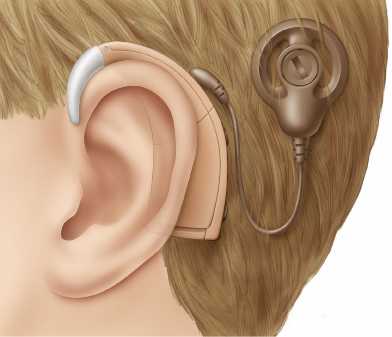Deaf Children Can Hear
After spontaneous Uber rides to UChicago and a dozen phone calls from piano practice rooms, I wrote this story at the end of my first quarter of college:

Chunks of cupcake flew into Lia Ferro’s hair after she switched on a boy’s hearing for the first time, she said. Ferro, an audiologist at the University of Chicago Medicine, has witnessed a multitude of reactions ranging from hysteria to nothing at all.
“I’ve been thrown up on, and we used to give out these big cupcakes, so I’ve had frosting all over me,” she said.
The boy is one of three of every 1,000 children in the United States born with hearing loss, according to the National Institute on Deafness and Other Communication Disorders. He is also part of the 40 percent of children born profoundly deaf and now has a cochlear implant, according to the NIDCD.
Cochlear implants — invented 30 years ago — make a detour around the damaged portions of the ear and directly jumpstart the auditory nerve, which drives sensory information to the brain. Sound is scooped up by an external microphone and sorted by a speech processor behind the ear. A transmitter converts the signals into electric impulses, which are picked up on the other side of the skin. The information travels to a collection of electrodes implanted in the cochlea, part of the inner ear, then to the auditory nerve and lastly to the brain.
When it was first introduced, the implant was not accepted.
“We were accused of child abuse for implanting our daughter,” said Melissa Chaikof, mother of two girls with bilateral cochlear implants. Her daughter, Rachel, was one of the first 200 people implanted.
Chaikof, however, stood behind her decision.
“She had nothing,” Chaikof said. “She was totally deaf, and there was nothing to lose. Whatever she got would be better.”
For some people, implantation, especially at a young age, is the obvious choice.
“Deaf children who only learn sign language have significantly lower literacy rates,” said Dorene Watkins, a school psychologist at the Center for Hearing and Communication in New York City. “They graduate high school with third- and fourth-grade reading levels.”
Early implantation gives children more options in the future, Chaikof said.
“I feel like it is irresponsible for other parents to choose no,” she said. “The implant processor can always be removed.”
Ninety percent of children with profound hearing loss are born to hearing parents — who often want to mainstream their child — according to the NIDCD.
“We wanted to give our son an opportunity to use oral communication and to fully participate in a world in which we exist on a day-to-day basis,” said Kristen Van Dyke, mother of 8-year-old Max who was the second youngest child implanted bilaterally in Dr. Nancy Young’s clinic at the Ann & Robert H. Lurie Children’s Hospital of Chicago.
The deaf community, however, views deafness as a cultural uniqueness rather than a disability, according to researcher Konstantina Stankovic, an ear surgeon and researcher focused on hearing restoration at the Massachusetts Eye and Ear Infirmary in Boston.
Some medical professionals take a more open-minded approach to implantation.
“I wouldn’t discourage a family who decided not to go for cochlear implants,” said Elizabeth Ying, a speech-language pathologist and co-director of the Shelley and Steven Einhorn Audiology and Communication Center at CHC. She said she believes it depends on the parents’ views of success.
Medical professionals also have differing opinions about the adoption rate of cochlear implants.
“It’s a wonderful device, but it is not the cure for everybody and not the course of action for every child,” Ying said. There are other variables that need to be in place to support a cochlear implant, she said.
“A teenager who has had no auditory experience, even though he or she may meet the audiologic criteria, would not be a good candidate,” Ying said. The teenager would be too old to learn to understand and interpret sound, Ying said.
A shortage of access can also be an obstacle, according to Sally Tannenbaum, co-director of the Pediatric Hearing Loss and Cochlear Implant Program at the University of Chicago Comer Children’s Hospital.
“Cochlear implant centers tend to be at major hospitals in urban settings,” she said. “We have families who travel hours to get here because there is nothing for them in their area.”
Stankovic said she expects the implant to gain popularity from an internal-only mechanism she is working on.
“Our device detects the natural vibrations of the middle ear bones, and that signal is fed into our chip,” she said. “In a way, it uses the body’s microphone.”
The cochlear implant has allowed children like Max to find his talent in music.
“I had him in music class the second he was activated,” Van Dyke said. “He sings better than my normal hearing kid.”
Although Max did not throw a cupcake on his hearing birthday, his reaction was one his mom will never forget, she said.
“I couldn’t wait to get him home,” Van Dyke said. “I proceeded to bang every pot and ring every bell and push every possible noise-making device we had in the house to keep eliciting a response from him. Every time he turned it was a pure miracle.”